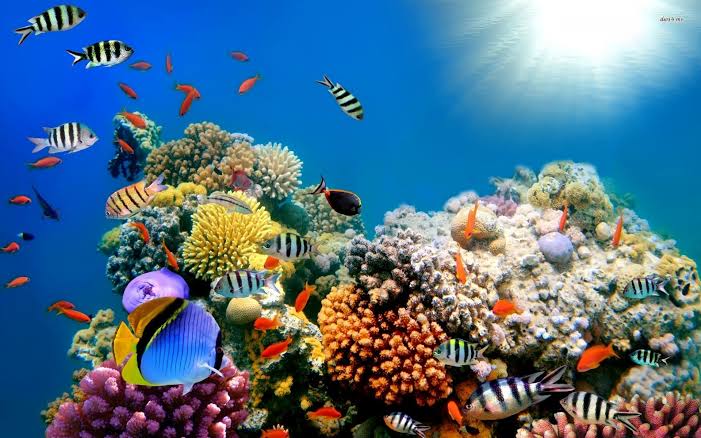The great barrier
reef is the biggest coral reef system in the world. One can see it from outer
space. It is the largest living structure made by living organisms in the
world. And it is highly vulnerable. In the past three decades, it has lost half
its coral cover, pollution has caused deadly starfish outbreaks, and global
warming has produced horrific coral bleaching. Coastal development also looms
as a chief threat. Huge coral bleaching events occurred in 1998 and 2002. The
reef was hit especially hard in 2016 and 2017 by underwater heat waves that
prompted bleaching events. This year, it is suffering a sixth mass bleaching
due to heat stress caused by climate change.
But recently,
two-thirds of the coral reef showed the highest recovery in the last 36 years.
The recovery of the coral in the north and central regions was a sign the reef
could recover from disturbances. At the same time, the loss of coral in the
south demonstrated how the reef is still vulnerable to continued acute and
severe interferences occurring more often and are longer-lasting. The latest
results show that the reef can recover during periods free of intense
disruption.
Scientists are
currently exploring the possibility of making the clouds above the Great
Barrier Reef larger and brighter in the hope that this will save it from
further coral bleaching. Researchers believe that by manipulating low-lying
clouds over the reef to be more reflective, it will have a chance to cool the
affected waters by a few degrees, a critical option during any potential El Niño
climate warming occurrences.
Though this piece
of research is still in its early days, several groups are studying cloud
brightening as a potential option for altering the climate. First presented by
British scientist John Latham almost 30 years ago, the idea is that fleets of
boats could spray minuscule particles of salt that have been generated from
seawater into the lower-lying clouds, inducing them to expand and become
denser. These thicker white clouds should then be able to reflect more of the
incoming heat out into space and away from the Earth’s surface. Lathem led a
study in 2012 at the University of Manchester, which found that this approach
could offset the resulting heat from double the amount of carbon dioxide in the
atmosphere.
Coral reefs are
one of our greatest treasures. It is almost shameful how we don’t value our
riches. Let us all join hands with those who are working towards protecting it.
Darshini Shah





